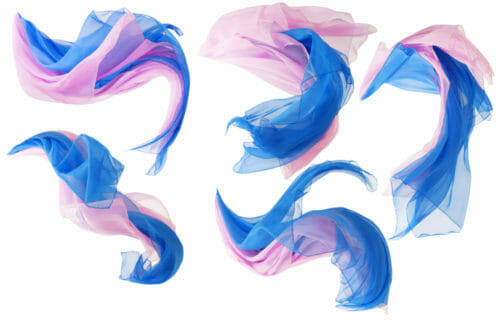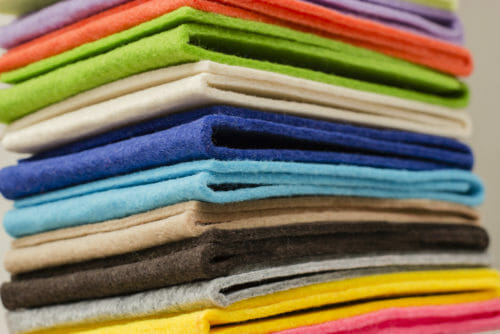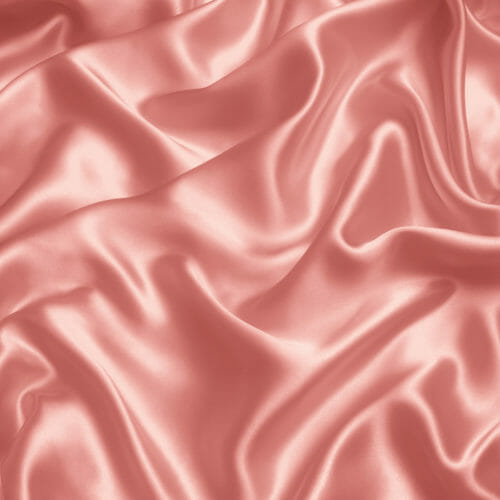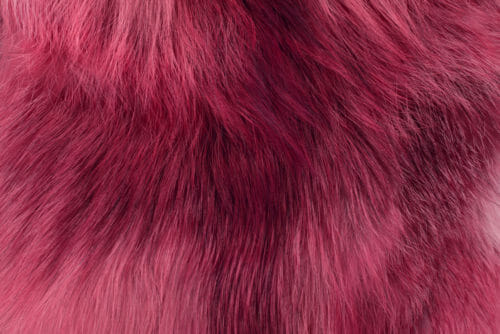
Knowing good basic sewing skills always comes in handy. But sometimes, challenging fabrics can still be too much to handle. Indeed, what may seem like simple tasks of folding and cutting fabric can become frustrating –not to mention the difficulties that will be encountered when we start running our sewing machines through these uncooperative fabrics.
Generally, when dealing with challenging fabrics, there are some things we can do to immediately improve the situation. Adjusting your machine's thread tension up and down until you identify the best setting for the particular fabric can do wonders. Speeding up as well as slowing down the sewing may make your sewing machine run smoothly over the fabric. You may just have to experiment a little. Simply making sure that the fabric is free of dust or any adhesive residue may also make it cooperate better with your sewing.
However, if these quick tips don't work, then you can read on and take note of some of these helpful hacks and tips for sewing difficult fabrics.
Fragile and Thick Fabrics


Sometimes we work with fabrics that are so fragile that there is a possibility that they tear up when we try to cut them. Soaking these delicate fabrics in lukewarm water can give us better results.
Long-bladed scissors are also helpful in cutting these fabrics aided by a heavy ruler along the edge so that there is less stress exerted on the fabric. You might also try a rotary cutter.
Use strips of starched fabric under the seams that will provide extra resilience to your delicate fabric when you start sewing. Simply pick the starched fabric off after you finish. And make sure that you are using fine sharp needles.
Another great tip is to let the hems take on a rounded shape as opposed to pressing your hem flat. And as much as possible, try using the least number of pins on your fragile fabric.


If you cut through thick fabric and it seems like cutting through leather, then it is time to use a craft knife. Place your fabric over a piece of wood or cutting mat wrong side up when you cut. In this way, you will not scratch the fabric surface if you accidentally slip with the knife.
When storing thick fabrics, it is sometimes best to roll them up like you would a poster to prevent permanent creases from forming in your fabric.
In some cases, thick fabrics don't need edging, while other thick fabrics may need a double row of close stitches without a fold to make a hem.
Leather-grade heavy needles are best suited for thick fabrics to prevent your needle from breaking. It is also important to use strong thread with thick fabrics and finishing is often best done by hand.
Slippery and Furry Fabrics


The problem with slippery fabrics is that they usually don't stay in place while you are sewing on them. Putting your slippery fabric between two layers of tissue paper should prevent them from slipping away from you and your sewing machine. This can also help you avoid snags that could destroy the smooth surface of the fabric.
Always press from the wrong side of shiny fabrics. You should always use a pressing cloth if you ever need to press the right side. You may also want to put paper under your seams when you press them open to avoid making creases on the right side of the fabric.
When preparing hems and seams of shiny fabrics, tacking by hand or hand basting is a good idea before you use your sewing machine. This will help prevent distortion in the final product.
Lastly, try using some regular spray starch –the kind you'd use for ironing a shirt– and applying a light spray across the fabric. This will stiffen it up the fabric making it much easier to handle while you're cutting.


Furry fabrics, on the other hand, can prove to be the most difficult to sew especially when the long fur fibers get entangled with your stitches.
Before you start sewing, brush your furry fabric using a soft hairbrush and make sure all the fibers are lying in one direction. When sewing and make sure the fibers are flat and in the same direction, arranged parallel to your stitches.
Remember that furry fabrics tend to have fragile bases so use double rows of stitches for your seams. A coarse thread and long stitches will also help in securely gripping your furry fabric. For more tips on sewing with fur, please review the linked article.
Final Thoughts on Sewing Difficult Fabrics
There is no doubt that working with fragile, thick, slippery, and furry fabrics can sometimes become a troublesome task. Each of these fabrics has special characteristics that can make cutting and sewing them a challenging job. Some of these difficult fabrics have the tendency to move during the cutting stage so having neat edges could prove to be elusive. Others can prove to be a handful when you try to feed them through your sewing machine. Deciding what stitch to use on these fabrics to produce the best result can already be intimidating to many.
However, producing something beautiful out of these challenging fabrics can give you a kind of satisfaction that is certainly worth all your efforts. So, roll up your sleeves up and start taking the challenge of working with these unpredictable fabrics! If you have any special tips for sewing difficult fabrics that you can share with the group, please add them in the comments below!








Is there a way of making faux leather easier to manage and more flexible when sewing. I was wondering if heating it would help with sewing tricky shaped upholstery. Do you have any suggestions please?
Perhaps but using a teflon foot is the best way to go. An industrial sewing machine would be the best way though. In my opinion. I hope others with more experience can comment.
Actually, a walking foot is best with leather. Leather machines have them and you can buy them for domestic machines. I use tissue paper on the top and bottom if I do not have a walking foot. that way the leather does not drag on the foot or the machine. Depending on the weight of the leather, a commercial machine may have to be used. A lot of domestic machines will not sew it as it is too heavy. (My Elna 62C from the 1970s works well as it has a two speed pedal to give it that extra power and punch.)
Hi please I really want to learn how to see can you teach me
I have a piece of fabric that is sheer & slips around easily when I try to cut it. Would spray starching & tissue paper work to settle the fabric? I’ve tried the tissue paper idea & found it didn’t work for me when used alone.
Lay a flat bedsheet on your table and place the fabric, then use waits to keep it from moving. This works for me when I have to cut organza.
Do not cut the bedsheet, please.
I got some scissors with a serrated blade that works really well to cut slippery fabrics. The serrations keep the fabric from slipping away when you close the scissors, and you get a clean cut.
Brush or blot gently with a solution of 1 part clear Elmer’s glue and 5 parts warm water. Straighten out your fabric, let it dry. It will be stiff enough to not shift or slide but flexible enough to work with.
I’ve used this on silk, organza, and tulle. It works great!!
Love this!!! I’m a seasoned sewer and I picked up a few new tricks from here!! I love the tissue paper idea for slippery fabrics!! Now whenever I see chiffons or satins, I wont have to fight and dread it as much!!!
My new machine has a built in walking foot, not only is it amazing for sewing slippery fabrics but it works really well for sewing leather.
Another idea: seaming thick, rubbery fabrics, try a layer of wax paper above & below the fabric, then tear away.
When sewing trick rubbery fabrics, I use potato flour. Dip a finger and apply it in a thin laver where you are to sew and it runs smoothly through the machine.
HELP, Please. I started sewing 2 months ago & I have really enjoyed it. I’ve made bags from all sorts of material (even had a go at patchwork) & they’ve all been really successful. So in my enthusiasm I decided to use up some memory foam pellets to make a bed for my dog! This is where the problem began. I sewed a ripstop lining for the pellets to go in & that went well, but when it came to sewing the cover I had chosen a lovely Mink coloured Jumbo Cord fabric, It just wouldn’t feed through the machine. Although there is a backing (of some kind) on the fabric it was like the feed dogs couldn’t grip! If that wasn’t bad enough, the fluffy cord on the right side seemed to be creeping all over the place. I turned the tension all the way up & down, used the longest stitch setting I had but still no joy. What am I doing wrong? (apart from maybe running before I can walk, which I’m guilty of all the time) ha ha.
Hi Kristina, it looks like you need a walking foot. What kind of machine are you using, can you sew on a scrap of fabric and play loosening the top tension?
Try using tissue paper on the bed of the machine and the top of the fabric. It sounds like it has a rubber or plastic layer on the fabric. The tissue will let it go through smoothly.
gin01@q.com I need to know how to make a a slit in each side a slit in the side of my jacket so it doesn’t hang on my hips at the bottom hem . Do you know what I mean slit down at the bottom of the jacket and then sew a peice of fabric on each peice of fabric to cover up the raw fabric!! Can you help me??
gnger johnson
I can Fred but this would require a whole tutorial. I Will keep it in mind.
For a great buy on a really good machine, check out your local quilt shops for trade-ins. Quilters often trade up to more recent models, making excellent machines available at a fraction of their original cost. Usually they have been serviced by the shop and are ready to go to work for you. Happy shopping!
I find that sewing fur with my old “steel” sewing machine is better as I find the new ones are too easy to “dirty” and the old one I have is easier to clearn and works better with thick fabrics
Hi Maya and Debi! Speaking of unusual fabric, is there a good way to sew hook & loop to ripstop nylon? Thin, sharp needle or thicker? I feel that I have to zig zag stitch around the hook & loop’s outer edge at least 4 times, for it to be secure, to wash. My boyfriend’s mom has me make belly bands for her male pug dogs. She had me use twill or denim, or bottom weight types, for inner lining and outer fabric, with elastic inside the outer fabric and inner lining, on top of that, my other customer suggested that I have a stretch nylon pocket, dancewear or swimwear, for a pad or cut up cloth diaper. My customer had me make belly bands for her Yorkshire terrier that way, but initially, the customer had me use two layers of cozy flannel cotton, only afterward had me add the pocket. The customer loves it, but my boyfriend’s mom now wants me to try waterproof nylon outer layer, with microfiber cloth inside as a lining, with no pocket. I’m working on a few for her now. I’ve never worked with nylon or microfiber before.The hook and loop sews well on cozy flannel and twill or bottom weight. I don’t know what needle to use, because both nylon and hook and loop are so opposite in thickness. Should I be using the #11 Singer needle for both, or one? Which gauge needle should I use for assembling and sewing both together?
THANK YOU!
WOW! You sure are busy girl, and would love a couple of pictures of our dilemma. personally when I am faced with having to attach 2 or more pieces of fabric of different types, I always go with the most difficult fabric. But, the best thing you can do right now is to try on a scrap of the fabrics and a walking foot and see if that takes care of things. It depends so much on what machine you are using, thread and the combinations of fabric and needle. Also, I would recommend when you are done with the project to save a scrap of fabric and write down how you solve the problem in case you are faced with it in the future. Hope this helps, Happy 2017 Sewing Year!
THANK YOU Mayra! A walking foot…THANK YOU! Why didn’t I think of that? I read about the walking foot, but never used it. THANK YOU! And thank you for the other tip on writing what to do with the scrap, writing down that I did, thank you Mayra! Can I send photos to here, to the email, to you? 😀 Thanks!
I am reading your reply, after, I did the one project sadly. It was ok, but my machine conked out on me as I was doing a finishing edge stitch. Truth be told, my machine conked out on Christmas eve night, while doing gifts. Thank God, I had other things that I was giving. Well, a few days after Christmas, I got a notice for payment for a belly band. Mind you, I was sick, working on gifts, and then the machine died. So it was fun week. I wound up getting a new sewing machine, bc my 11 year old, hard working, machine broke. So, I get one, I worked on this project, that I wrote about above (of course, I didn’t read your comment until today sigh), anyway, the machine broke! I had it 5 days. The bobbin holder inside literally shifted down and to the right corner, inside! No more cheap machines, I said.
So now, I’m sourcing a new machine. I kind of parlayed into sewing, as part of my many hats that I wear for business. I’m into everything: art on products that are on Cafepress, Zazzle, etc., selling cards, calendars, and printables, even sewing and paper craft pattern downloads with my art on Craftsy & Craftsuprint, so sewing itself kind of took a backburner, per se, where I was only using it to sewing my samples, but I kept working the poor thing until the knob and needle just didn’t want to move anymore. I took it apart, cleaned it best I could, unscrewed panels, got more dust out. The bad thing was that the knob that makes the needle go up and down, on the old machine that died, the screw wouldn’t unscrew, it almost looked like it was glued in!
Right after Christmas, I got requests to sew stuff, belly bands, I have a customer who I’ve made accessories for her Yorkshire terrier, she is a lady who wants more Yorkie tshirts that I make from 2T onesies and adult tshirts, and I’m thankful that I have them. She got me into making things that I never thought I’d make before. I started out with making fabric photo frames! lol I’m an accessories and home decor maker 😀 I went from fabric covered mat board frames, to washable, sewn, fabric frames, to washable, no sew, fabric frames, to brooches, house shape kitchen pot holders, and now these dog accessories. I’ve figured out ways to make dog diapers, but haven’t implemented the microfiber terry cloth, eventually some time this year, I guess I’ll do that. So, when I was presented with these things, that she had confidence in me making, I thought, ok, I’ll try this. lol 😀
I’m getting a machine hopefully this week, but before I do so, since I’m looking for one, again, is there anything that I should look for, any model you recommend under $300 preferably? I really don’t need one that does embroidery, although, I’ve done embroidery, per se, if you want to call it that, on the Yorkie tshirts that I’ve done in the past, with that thin, iron on interfacing, and the zig zag stitch, stitch width 3-5, and stitch length one. It can be done, if you practice. I was doing it solely on the confidence that my customer gave me, and luck lol. 😀 I just want a good heavy duty sewing machine.
If I’m going to be sewing these belly bands, with Velcro, ripstop nylon and microfiber terry cloth for the one customer, with an elastic pocket, I’m now thinking of putting an elastic pocket on the top and bottom sides, but before she had me putting one in the middle, going left to right across their belly, but in the middle of the belly band, which, if I’m using 2 different color fabrics, I’m thinking it would be good to use the color for the outer fabric, as thats’ the side that shows outward. Dogs are peeing in these things, so its not like the customers are buying them for the aesthetic value LOL. I even offered to put a applique with one of my frame designs and the dog’s name, printed on a Printed Treasures washable, colorfast, inkjet printer fabric sheet. The customer declined. Although, my other customer wants me to put the applique on it, she things its great. That’s just to personalize them. Now the other customer had me using twill / denim / bottom weight, some customers want the stretch nylon pocket, for a maxi pad or cut up cloth diaper to be inserted, even a swatch of microfiber cloth, they can get that from the dollar store. Problem is …the colors are less than to be desired, for microfiber cloth. I was having a hard time sourcing it in the stores, they offer it online on 2 sites for $12.95/yard, I’ve found, just haven’t bought it yet, bc, I found a fairly pleasing yellow microfiber cloth in Dollar Tree, bought 2, to cover the whole inner lining. Now, the first pug customer wants ripstop nylon,and the microfiber terry cloth lining the whole inside, along with the new pug owner customer that I got over the holidays, so that’s a lot of mish mash weight fabric lol. Should I use a thick, denim weight needle for everything, all panels, or a lightweight needle for the ripstop nylon, then switch to heavy needle for velcro & microfiber cloth, then sew them all with the denim, heavy needle.
Please keep in mind, everyone reading this lol, I was asked to do these things, out of sheer confidence from my customers 😀 You know, they find out that you sew …”Oh you sew?! Great! Well can you…?” lol
The new, but broken machine, that was returned earlier this week, was eating the fibers of the terry cloth, I’d see bits of fiber around where those teethy mechanisms, I forget what they are called, but their under the needle, supposedly to help guide the fabric through the machine, which by the way, I felt that they were a little too raised coming up from the machine, and I couldn’t figure out how to lower them, I tried all the buttons and knobs. I chalked it up to being a “pile” fabric, like upholstery, it has a warp and weft, with a 3rd fiber coming up from the bottom, right? So, there were a few, “Something’s not right moments”, in those 5 days of having this machine.
I’m sorry if this is long, but I figured while I have your interested, maybe you could help me with other things, too, relating to it.
Thank you again, Mayra and Deby!
Kristie http://fabricatedframes.com
wow! Kristie, you are a busy girl! I hear you about the machine, I have had a machine dying a couple of times and that is why no more cheap machines for me either. Your budget is tight so the only machine I can recommend is the Sewist 525S by Janome. You can find a lot of good info here: https://sewing-machine-reviews.com. It is the simplest machine I had and the most trust worthy for under 300. It has a metal bobbin casing so it will not spoiled easily. One thing I have to emphasize if you buy a machine with a plastic casing stick to plastic bobbins or you will damage the casing very fast. Good luck with your pet sewing business, I think you are in the right place when people actually seek you out and trust you. Happy New Year and keep in touch!
Thank you Mayra!
Kristie http://fabricatedframes.com
Look for an older resale metal machine. They are workhorses.
Try looking on EBay for an Elna 62C with the original pedal as it is two speed. The machine is not digital, but the pedal is electronic so it will not get hot and the machine is metal, not plastic. I have four of them and use one (my original from 73) as a parts machine now as Elnas from those years are no longer made. You should be able to pick one up for under $300 and that was about what I paid for my original new one in 73. Have sewn tricot knit for panties and leather for jackets with my machine. Workhorses and very little sound when sewing. Purrs like a kitten and has an open arm. Janome now owns the Elna patents but the new ones are not as good as the 62C!
THANK YOU FOR THE TIPS! I HAVE BEEN SEWING A LONG TIME, AND MANY TIMES I GET DISCOURAGED BECAUSE OF ISSUES WITH THE MATERIAL. THIS WILL HELP ME DO BETTER IN THE FUTURE!
Indeed Meri, don’t give up. Drop me a line if you need any help.
I tried to Pin this but the link seems to be broken
Hi Barbara, thanks for letting me know. I don’t think it is the link for this particular article but rather the whole sharing system for Pinterest seems to be affected. I’ll have out tech guys look into this. Thanks again for the heads up.